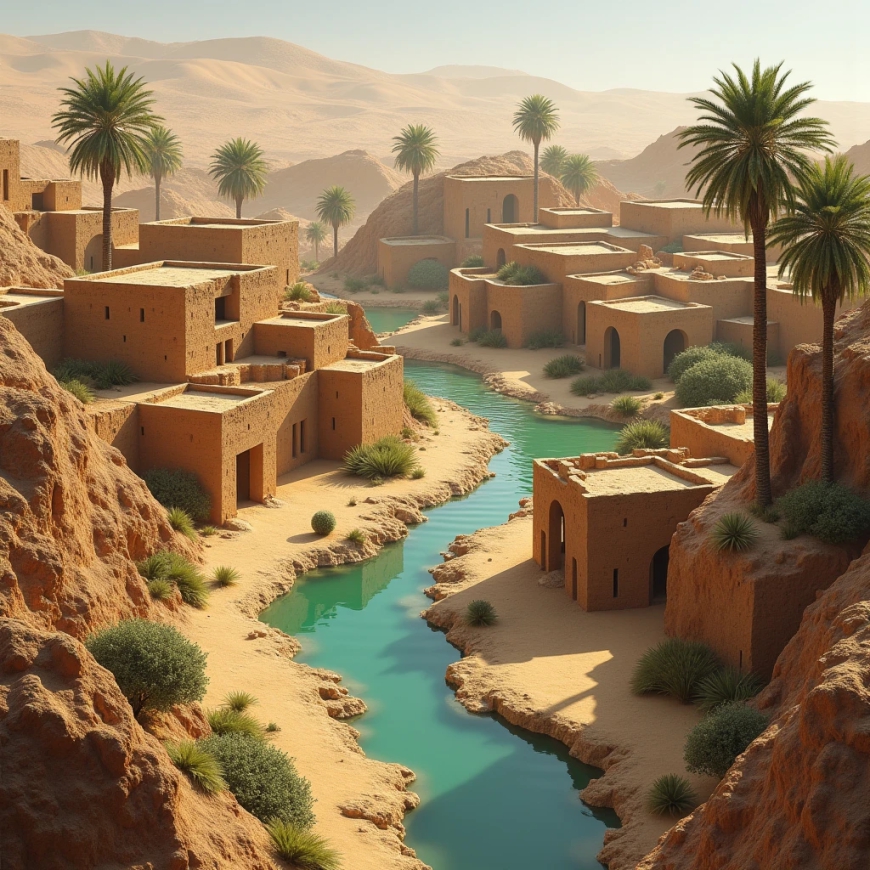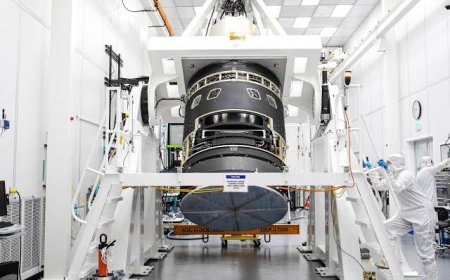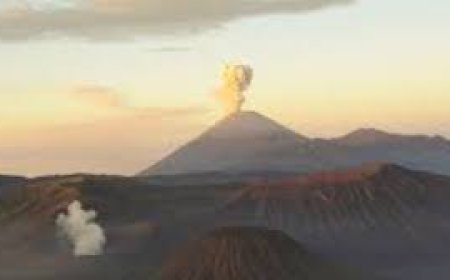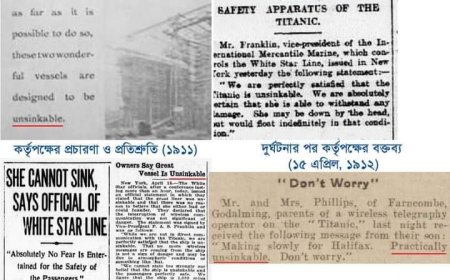Unveiling Arabia’s Past: The Remarkable Discovery of a 4,000-Year-Old Town Hidden Beneath Saudi Arabia’s Oasis
In a groundbreaking discovery, archaeologists have uncovered a 4,000-year-old town buried beneath the sands of an oasis in Saudi Arabia. This ancient Bronze Age settlement, located in AlUla, is reshaping our understanding of early civilizations in the Arabian Peninsula and challenging previous assumptions about the region’s history. The find offers an extraordinary glimpse into a once-thriving community that existed in one of the world’s most arid environments. This article dives into the fascinating details of the discovery, the historical context surrounding it, and the advanced technology that made it possible.

Discovering an Ancient Town in AlUla:-
Nestled in northwestern Saudi Arabia, the oasis of AlUla is renowned for its distinctive landscape, characterized by towering rock formations, lush vegetation, and a rich history that dates back thousands of years. In recent years, Saudi Arabia has invested heavily in exploring and preserving its ancient heritage, turning AlUla into a hub of archaeological research. Amidst this landscape, archaeologists stumbled upon the remnants of a town that had been hidden for millennia under layers of desert sand.
Through a combination of satellite imagery, ground-penetrating radar, and traditional excavation, researchers uncovered the layout of this ancient settlement. Preliminary studies suggest that the town dates back approximately 4,000 years to the Bronze Age, a period marked by technological advancements, the emergence of city-states, and extensive trade networks that spanned the Middle East. The discovery of this settlement in AlUla adds a new chapter to the history of the Arabian Peninsula, offering evidence that sophisticated communities once flourished in the heart of the desert.
A Glimpse into Bronze Age Civilization in Arabia:-
The Bronze Age, spanning from around 3300 BCE to 1200 BCE, was a transformative period in human history. This era saw the development of complex societies, the rise of trade, and advancements in metallurgy that allowed for the widespread use of bronze tools and weapons. The newly discovered town in AlUla is believed to have been part of this larger Bronze Age world, reflecting the cultural and technological innovations of the time.
One of the most intriguing aspects of this settlement is its location within an oasis, which would have been essential for survival in the harsh desert environment. Archaeologists speculate that the inhabitants of this town were skilled in water management and agriculture, utilizing the oasis’s resources to support their community. The town’s layout, with its distinct buildings and communal spaces, suggests a society with a high level of organization and social structure. The discovery of pottery, tools, and other artifacts within the town further supports this view, indicating that the residents engaged in craft production and possibly trade with neighboring regions.
The Role of AlUla as a Trade and Cultural Hub:-
The location of this ancient town in AlUla is no coincidence. Situated along ancient trade routes that connected the Arabian Peninsula with Mesopotamia, the Levant, and the Indus Valley, AlUla would have been a strategic point for commerce and cultural exchange. This oasis, with its fertile land and access to water, would have provided a natural resting place for traders and travelers moving through the region. The discovery of this town suggests that AlUla was not only a place of settlement but also a key player in the Bronze Age trade networks that spanned the Middle East.
Artifacts found at the site, including pottery fragments and tools, hint at the possibility of long-distance trade. Similarities between these items and those found in Mesopotamia and the Indus Valley suggest that the residents of this town may have been part of a wider trade network. This connection is particularly significant, as it challenges the traditional view of the Arabian Peninsula as an isolated region during the Bronze Age. Instead, this settlement in AlUla reveals that ancient Arabia was more interconnected with other civilizations than previously thought.
Advanced Technology Unveils the Past:-
The discovery of this ancient town was made possible through the use of advanced archaeological techniques. In recent years, technological innovations such as satellite imagery and ground-penetrating radar have revolutionized the field of archaeology, allowing researchers to detect buried structures without disturbing the ground. In the case of the AlUla settlement, these technologies provided a detailed map of the town’s layout, revealing buildings, streets, and communal areas that had been hidden beneath the sand for thousands of years.
Satellite imagery played a crucial role in identifying unusual formations in the desert, which led archaeologists to investigate further. Ground-penetrating radar, a non-invasive technique, allowed researchers to “see” beneath the sand, detecting structures and artifacts without the need for extensive excavation. These methods not only preserve the integrity of the site but also enable archaeologists to gather more information about its size, layout, and the materials used in its construction.
In addition to these technologies, researchers also used traditional excavation techniques to uncover artifacts and analyze soil samples, providing a more comprehensive understanding of the site. The combination of modern technology and traditional methods has allowed archaeologists to reconstruct a detailed picture of life in this ancient town, offering insights into its inhabitants’ daily lives, social structure, and interactions with other communities.
Insights into Daily Life in the Ancient Town:-
The artifacts discovered at the AlUla site provide valuable clues about the daily lives of its inhabitants. Pottery fragments, tools, and remnants of structures indicate a community that was skilled in craftsmanship and resource management. The pottery, for example, reflects a high level of artistry and functionality, suggesting that the people of this town had developed techniques for creating durable and aesthetically pleasing vessels for cooking, storage, and trade.
Tools found at the site include bronze implements that would have been used for agriculture, construction, and possibly warfare. These tools reflect the technological advancements of the Bronze Age and suggest that the town’s inhabitants were well-equipped to manage their environment. The presence of bronze tools also indicates that the people of this town had access to raw materials and the knowledge to produce metalwork, a skill that would have been essential for survival and economic growth in the harsh desert climate.
In addition to artifacts, the layout of the town provides insights into its social organization. The presence of communal spaces, such as gathering areas and public buildings, suggests that the town’s inhabitants had a sense of community and social cohesion. This organization is further supported by the town’s proximity to the oasis, which would have been a shared resource vital for the survival of the community. The discovery of these communal spaces highlights the importance of cooperation and social structure in ancient Arabian society, challenging the notion of the Arabian Peninsula as a land of isolated nomadic tribes.
The Broader Significance of the Discovery:-
The uncovering of a 4,000-year-old settlement in Saudi Arabia’s desert oasis is a significant milestone for archaeology, particularly in a region where ancient history is often overshadowed by the achievements of neighboring civilizations. This discovery provides a rare glimpse into the lives of people who lived in the Arabian Peninsula during the Bronze Age, a period that is often understudied in the context of Arabian history.
Historically, the Arabian Peninsula has been viewed as a remote and isolated region, with limited connections to the broader ancient world. However, the discovery of this town in AlUla challenges this perspective, revealing that ancient Arabia was more interconnected with other civilizations than previously thought. The town’s strategic location along trade routes and its advanced social structure suggest that the Arabian Peninsula played an active role in regional dynamics, contributing to the cultural and economic exchanges that shaped the ancient Middle East.
This discovery also has broader implications for the study of ancient civilizations in arid environments. The fact that a community was able to thrive in the desert, relying on the resources of an oasis, speaks to the ingenuity and adaptability of early humans. This resilience is a testament to the creativity and determination of ancient peoples, who developed strategies for survival in some of the world’s most challenging landscapes.
Preserving Saudi Arabia’s Heritage for Future Generations:-
The discovery of this ancient town has sparked renewed interest in Saudi Arabia’s archaeological heritage, prompting efforts to preserve and study the site. Saudi Arabia’s government has recognized the importance of its ancient heritage and has made significant investments in archaeological research and conservation. The AlUla region, in particular, has become a focal point for these efforts, with plans to develop the area as a cultural and historical destination.
Preserving this site is essential for future research and education, as it provides invaluable information about early human civilization in the Arabian Peninsula. By safeguarding this ancient town, Saudi Arabia is not only preserving its own heritage but also contributing to the global understanding of human history. The site’s preservation will allow future generations to study and learn from the past, fostering a deeper appreciation for the cultural and historical richness of the Arabian Peninsula.
Conclusion: A New Chapter in Arabian History:-
The discovery of a 4,000-year-old town hidden beneath Saudi Arabia’s desert oasis is a remarkable achievement that has transformed our understanding of ancient Arabia. This settlement, with its advanced social structure, sophisticated craftsmanship, and strategic location, challenges previous assumptions about the Arabian Peninsula’s history and its role in the ancient world. Far from being an isolated desert, ancient Arabia emerges as a land of thriving communities, dynamic trade networks, and cultural exchange.
As archaeologists continue to study this ancient town, they will undoubtedly uncover more details about its inhabitants, their interactions with other civilizations, and the technologies they used to survive in the desert. Each new discovery adds to our understanding of humanity’s shared past, revealing the resilience, creativity, and interconnectedness of ancient societies. This hidden town in AlUla is not only a testament to the achievements of ancient Arabia but also a reminder that history is always waiting to be uncovered, even in the most unexpected places.














































